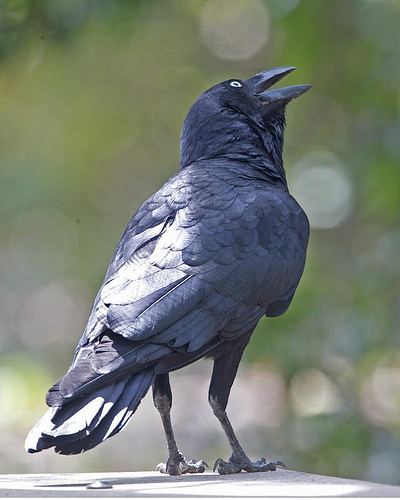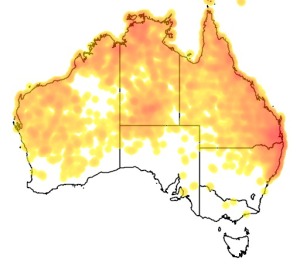Colours
Distinguishing features
It has the typical white iris of the other Australasian Corvus species but can be distinguished from most (except the Little Crow) by the base of the head and neck feathers being snow white (revealed when blown by a strong wind). It also shuffles its wings after alighting. (Wikipedia)
Size
- From 50 cm to 55 cm (Length of specimen)
Wingspan
- Wingspan data is not yet available.
Synonyms
Distribution
Distribution and habitat preferences
The range of the mainland Australian race occupies the tropical north of Australia as far south as Brisbane on the east coast where the species seems to be adjusting well to a city life. Over much of this range, it is simple to distinguish from other species, as it is the only corvid found in northern Australia.
The other three races occur on various islands to the north: C. orru orru (the nominate form from Papua New Guinea and the Moluccas), C. orru insularis from New Britain and nearby islands and lastly C. orru latirostris of Tanimbar and Babar Islands. (Wikipedia)
Audio recordings
Diet
A typical crow in that it will take just about anything. It has been seen taking stranded fish on the seashore, carrion, human food scraps, fruit and insects. Adaptable and intelligent like its North American, European, African and Asian relatives, it has learned how to kill and eat the introduced poisonous Cane Toad without ingesting the poison by flipping it onto its back and delivering a lethal blow with its powerful bill. (Wikipedia)



